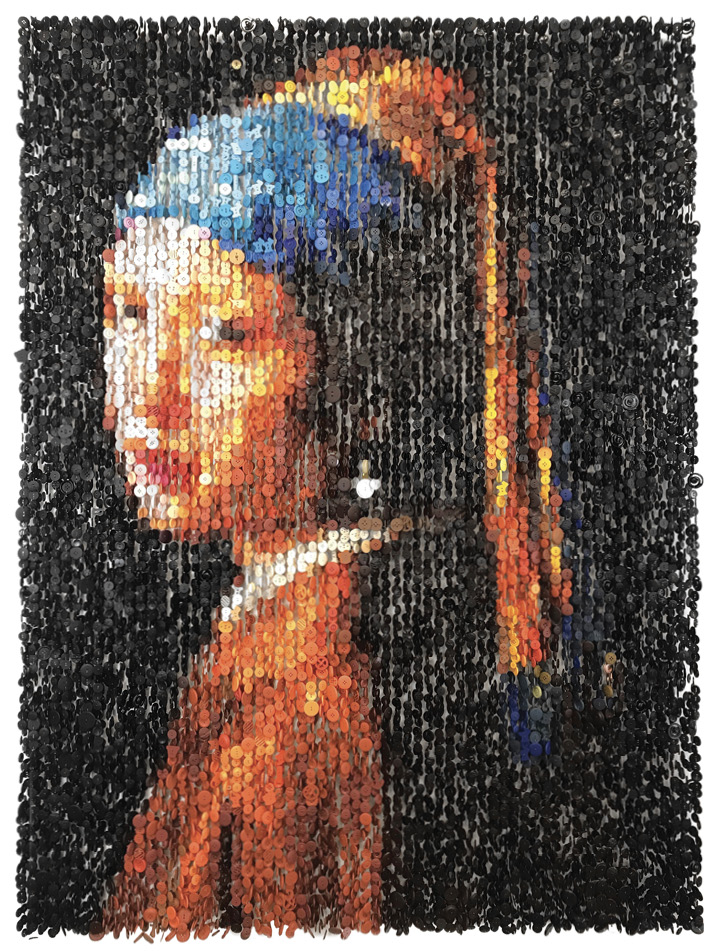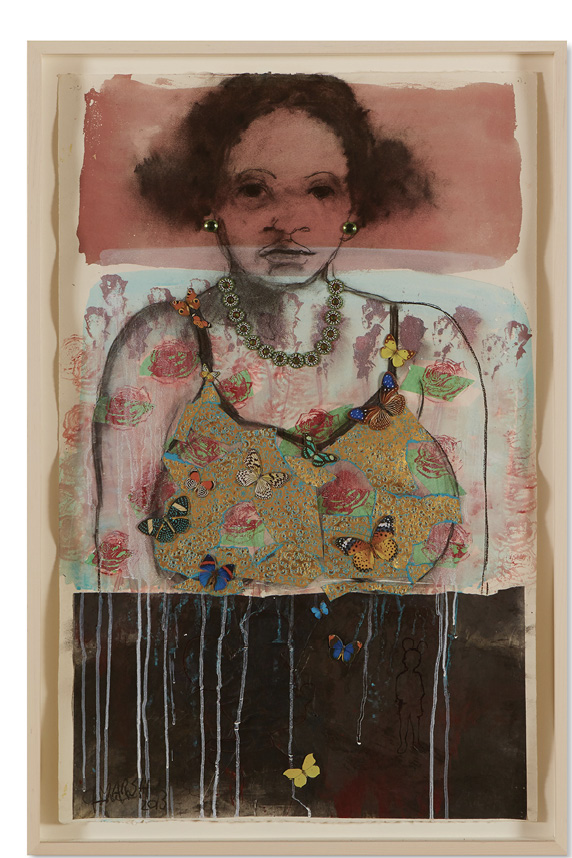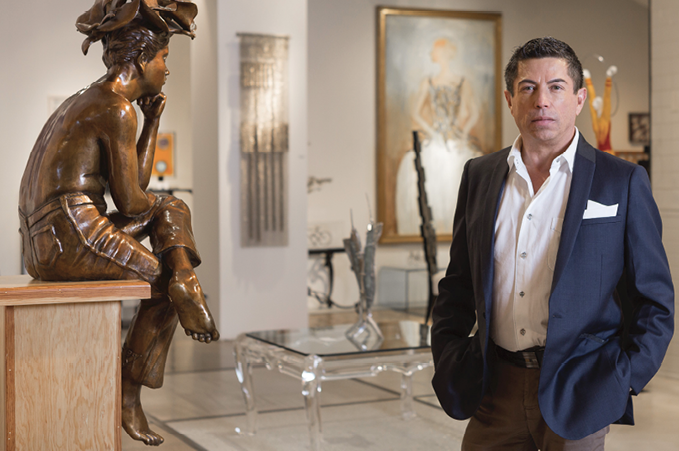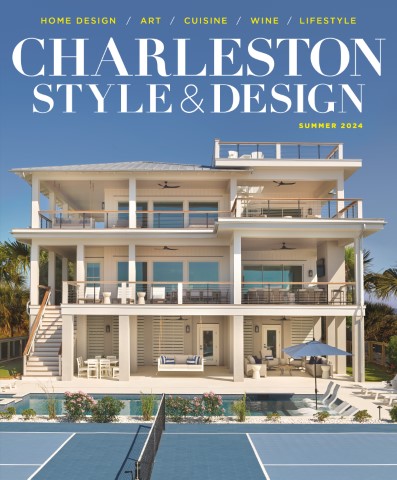A portrait of girl with a pearl earring made entirely of buttons, a punk-rock Buddha robed in Swarovski crystals and a bronze grenade flowerpot. When Aldo Castillo is considering an artist for his eponymous galleries in Naples and Estero, Florida, he looks for two things: innovation and documentation.

For more than three decades, the gallerist has appreciated art’s role in recording history and activism, elevating the works of Latin American artists. For those he chooses to showcase, he’s struck by how they embrace materials and technology and how they create a dialogue with those who experience their work.
“The artists who come to me—they are talented, but they are also communicators of societal issues,” says Castillo.

Originally from Nicaragua, he studied architecture in Guatemala City and was thrown into the art world as the graphic designer and curator at the Museo Popol Vuh—home to some of the world’s largest collections of Mayan art. After four years, Castillo wanted to explore his abilities as an artist, and he earned a scholarship to the School of the Art Institute of Chicago in 1986. But it wasn’t his art that he discovered, it was how he could use it as a vessel for activism.

Castillo wasn’t able to finish his fine arts studies because of the Iran-Contra scandal and the Nicaraguan Revolution, but he managed to stay in the United States under political asylum. He felt lost, unsure what his role was in the world. Then the HIV/AIDS crisis swept across the country. All around him, friends and artists were dying from the virus, so he volunteered for Stop AIDS Chicago and eventually became a board member at the AIDS Foundation of Chicago. He also leveraged his connections to politicians to help lift up the voices of the LGBT community. In 2005, he was inducted into The Chicago LGBT Hall of Fame for his work in human rights activism in AIDS and political organization.
“I became an activist, a human rights activist,” he says. “I lost so many people in our community. A lot of these people were creators; there were a lot of artists and friends, too. AIDS was not discriminating.”

Also at this time, he was participating in discussions about race and being labeled Latino. He had never before felt like an “other,” and Castillo challenged his American friends to think about what it meant to be Latino or Hispanic, as well as to understand the diversity within Central and South America. In 1993, he opened the Aldo Castillo Gallery.
“I was in Chicago in this beautiful, amazing city with an amazing history, but it was also a land where a label was put into me,” he remembers. “There was so much confusion about what a Latin American was. So, I thought that the art would do the job to explain to people what that is without me having to say anything.”
The gallery became a platform for Latin American artists. Using his knowledge of ancient cultures from his time at Museo Popol Vuh, Castillo also wanted to share that Mayan, Aztec and Incan art weren’t “primitive” works to be dismissed. Art and artists, he says, tell stories and document history.
“Throughout history, art has been the main force for artists to create, to be creative through their talent, to express ideas, and often they reflect on what’s happening at the moment,” Castillo says. “So, when I came up with all these ideas, it was because I knew that power.”

He became the authority on Latin American art and carved a niche in the Chicago landscape, bringing in artists from around the world. In 2007, he organized Chicago ARTEahora, and then in 2010, another opportunity came to his door, one that would bring him to Florida. Castillo accepted the role of assistant art director for the Miami International Art Fair, so he closed the doors to his gallery and relocated to Naples. In its first year, 2011, more than 70,000 people attended.
During his free time in his new town, Castillo explored the area and found that just like Chicago in the ’90s, something was missing. “I used to drive around, getting to know the place, and I found out … there was no exposure for really high-end, international contemporary artists, and I wanted to bring that to Southwest Florida,” he says.
He opened the first Aldo Castillo Gallery in Estero in 2011, then the Naples location in 2020. Under his name, he represents the likes of Metis Atash, Augusto Esquivel, Lluis Barba, Scott Ashley, Lorna Marsh and more.
“The more exposure you have to something, the more knowledgeable or more your perceptions or taste changes,” Castillo says of the artists’ storytelling. “Then you develop new ways of appreciation.” *
Christiana Lilly is a freelance journalist in Pompano Beach, Florida. See more of her work spanning the arts, community news and social justice at christianalilly.com.

